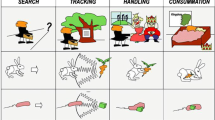Abstract
For some reason, we spend our lives in s state of perpetually renewed surprise, startled by the world around us and by how our bodies have responded to it.
It’s the reflex arc, working on different levels, firing off responses long before the mind has a moment to think. This is fine for jumping out of the path of a moving car, but sometimes the confusion of stimuli cause us to jump in the wrong direction.
Besides that, these arcs – or cycles of sensing, processing, and reacting – they don’t only work at the level of reflexes. They are also going on in the mind. This is how we learn everything we know, from walking to writing and from reaching to religion. Trial, detection of the results, consideration of the results, and retrial: it’s just a slightly deeper version of the same reflex arc.
But what if I were to tell you that our mental reflex arc had a short cut; a way to let us save our lives first, and then think about it afterwards? “Better to apologize than wait for permission”, right? And what if I were to tell you that this short cut, and the process of thinking about it afterwards, is at the heart of some of the worst things we do to ourselves and to others?
Would you like to know how to fix it?
Before we can discuss it, let’s take a quick look at a working model of the nervous system and of the brain. Like all models, they are functional simplifications, tools we can use even though they fail to perfectly reflect the depth and range of how the systems really work. I encourage you to learn more in the future, but I hope that this chapter will give you a new perspective or even a starting point.


Have you ever noticed that, under an electron microscope, nerve cells look like the Flying Spaghetti Monster (mybtbhna)? No? Maybe you should pray about it and then look again
Access this chapter
Tax calculation will be finalised at checkout
Purchases are for personal use only
Similar content being viewed by others
References
Sagan C (1977) The Dragons of Eden: speculations on the evolution of human intelligence. Random House, New York, 263 p
MacLean PD (1952) Some psychiatric implications of physiological studies on frontotemporal portion of limbic system (visceral brain). Electroencephalogr Clin Neurophysiol 4(4):407–418
MacLean PD (1990) The triune brain in evolution: role in paleocerebral functions. Springer Science & Business Media, Berlin
MacLean PD (1949) Psychosomatic disease and the “Visceral Brain”: recent developments bearing on the Papez theory of emotion. Psychosom Med 11(6):338–353
Broca P (1865) Sur le siège de la faculté du langage articulé. Bull Soc Anthropol Paris 6(1):377–393
Seuss D (1961) The sneetches and other stories. Random House, New York
Giedd JN (2012) The digital revolution and adolescent brain evolution. J Adolesc Health: Off Publ Soc Adolesc Med 51(2):101
Seligman ME, Maier SF (1967) Failure to escape traumatic shock. J Exp Psychol 74(1):1
Overmier JB, Seligman ME (1967) Effects of inescapable shock upon subsequent escape and avoidance responding. J Comp Physiol Psychol 63(1):28
Author information
Authors and Affiliations
Rights and permissions
Copyright information
© 2016 Springer International Publishing Switzerland
About this chapter
Cite this chapter
Brown, J.N.A. (2016). Psychology and Neurology: The Surprisingly Simple Science of Using Your Brain. In: Anthropology-Based Computing. Human–Computer Interaction Series. Springer, Cham. https://doi.org/10.1007/978-3-319-24421-1_9
Download citation
DOI: https://doi.org/10.1007/978-3-319-24421-1_9
Published:
Publisher Name: Springer, Cham
Print ISBN: 978-3-319-24419-8
Online ISBN: 978-3-319-24421-1
eBook Packages: Computer ScienceComputer Science (R0)




